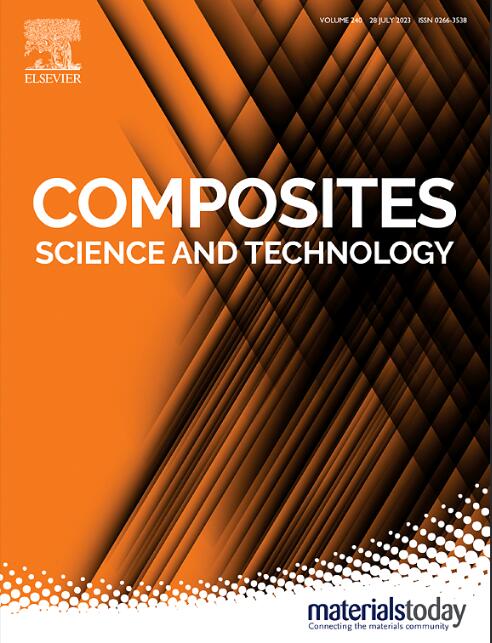Investigation on the in situ interfacial Mode II fracture toughness of the 3D woven composites
IF 8.3
1区 材料科学
Q1 MATERIALS SCIENCE, COMPOSITES
引用次数: 0
Abstract
The interfacial mode II fracture toughness GIIC is an important parameter that significantly affects the damage evolution of the composite materials under shear load. Traditional interlaminar fracture toughness test methods are no longer suitable for the measurement of interfacial fracture toughness within the 3D woven composites (3DWCs) because these methods cause yarn breakage, which could overestimate the fracture toughness by more than ten times. To this end, this paper proposes a new method to obtain the in situ interfacial GIIC of the 3DWCs. The stable propagation of the mode II crack along the interface was achieved by the unique specimen design. A highly restored finite element (FE) model of the specimen was established, and the virtual crack closure technique (VCCT) was adopted to calculate the interfacial GIIC. The rationality of the experiments and the validation of the simulation have been carefully demonstrated. The values of GIIC obtained from three different off-axis angles are consistent, which proves the effectiveness of the proposed method.

三维编织复合材料原位界面II型断裂韧性研究
界面II型断裂韧性是影响复合材料在剪切载荷作用下损伤演化的重要参数。传统的层间断裂韧性测试方法已不再适用于三维编织复合材料(3DWCs)内部界面断裂韧性的测量,因为这些方法会导致纱线断裂,从而使断裂韧性高估十倍以上。为此,本文提出了一种新的方法来获取3DWCs的原位界面GIIC。通过独特的试样设计,实现了II型裂纹沿界面的稳定扩展。建立了试件的高修复有限元模型,采用虚拟裂纹闭合技术(VCCT)计算界面GIIC。详细论证了实验的合理性和仿真的有效性。在三种不同离轴角度下得到的GIIC值一致,证明了所提方法的有效性。
本文章由计算机程序翻译,如有差异,请以英文原文为准。
求助全文
约1分钟内获得全文
求助全文
来源期刊

Composites Science and Technology
工程技术-材料科学:复合
CiteScore
16.20
自引率
9.90%
发文量
611
审稿时长
33 days
期刊介绍:
Composites Science and Technology publishes refereed original articles on the fundamental and applied science of engineering composites. The focus of this journal is on polymeric matrix composites with reinforcements/fillers ranging from nano- to macro-scale. CSTE encourages manuscripts reporting unique, innovative contributions to the physics, chemistry, materials science and applied mechanics aspects of advanced composites.
Besides traditional fiber reinforced composites, novel composites with significant potential for engineering applications are encouraged.
 求助内容:
求助内容: 应助结果提醒方式:
应助结果提醒方式:


